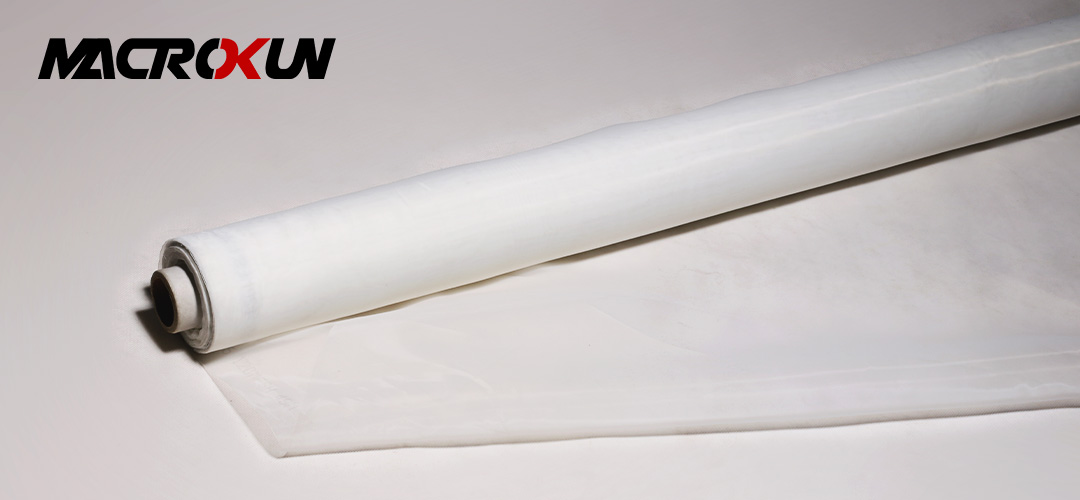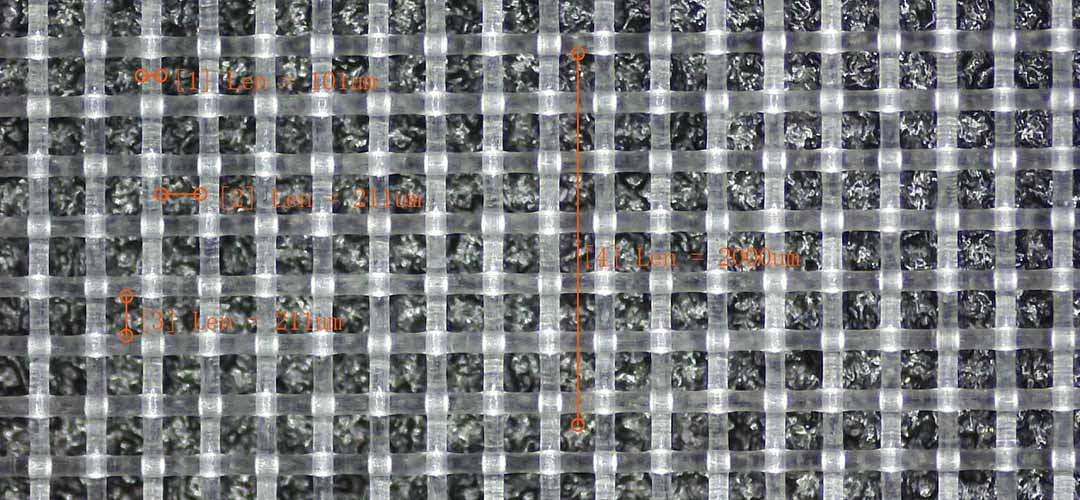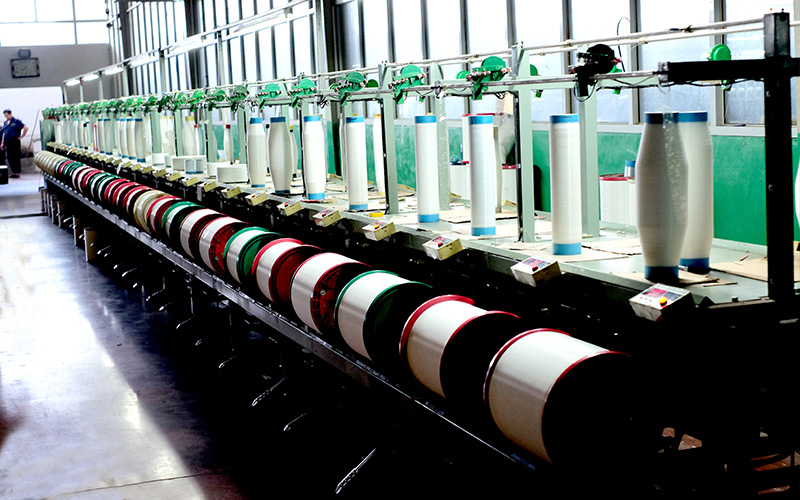Micron ratings are a critical aspect of mesh netting that significantly influence filtration efficiency across various applications. Understanding these ratings is essential for selecting the appropriate netting material for specific filtration needs. A micron, which is one-millionth of a meter, serves as a unit of measurement that quantifies the size of particles that can be filtered out by a particular mesh. Consequently, the lower the micron rating, the smaller the particles that can be effectively captured. For instance, a mesh netting with a rating of 5 microns can filter out particles that are 5 microns in size or larger, while allowing smaller particles to pass through.
The significance of micron ratings becomes particularly evident when considering the diverse applications of mesh netting. In industries such as water treatment, food processing, and pharmaceuticals, the ability to filter out specific contaminants is paramount. For example, in water filtration systems, a netting with a lower micron rating is essential for removing bacteria and other pathogens, which can be as small as 1.2 microns. Conversely, in applications where larger particles, such as leaves or sediment, are the primary concern, a mesh with a higher micron rating may suffice. This distinction underscores the importance of selecting the right micron rating based on the specific filtration requirements of the application.
Moreover, the choice of micron rating can also impact the flow rate of the fluid being filtered. Generally, finer mesh netting, which has a lower micron rating, tends to restrict flow more than coarser mesh. This is due to the increased surface area that the fluid must navigate through, which can lead to a buildup of pressure and a decrease in flow efficiency. Therefore, it is crucial to strike a balance between filtration precision and flow rate. In many cases, a multi-stage filtration system is employed, where different mesh nettings with varying micron ratings are used in succession. This approach allows for the effective removal of a wide range of particle sizes while maintaining an optimal flow rate.
In addition to the size of the particles, the material composition of the mesh netting also plays a vital role in its filtration capabilities. Different materials, such as nylon, polyester, or stainless steel, offer varying levels of durability, chemical resistance, and temperature tolerance. For instance, stainless steel mesh is often preferred in high-temperature or corrosive environments, while nylon mesh may be more suitable for applications involving food products due to its non-reactive properties. Understanding the interplay between micron ratings and material characteristics is essential for making informed decisions regarding filtration solutions.
Furthermore, it is important to consider the maintenance and longevity of the mesh netting. Over time, even the most effective filtration systems can become less efficient due to clogging or degradation of the mesh material. Regular maintenance, including cleaning or replacing the mesh, is necessary to ensure optimal performance. By understanding the implications of micron ratings and the factors that influence filtration efficiency, businesses can make strategic choices that enhance their operational effectiveness.
In conclusion, micron ratings are a fundamental aspect of mesh netting that directly affects filtration performance. By comprehensively understanding what these ratings mean and how they relate to particle size, flow rate, and material properties, businesses can select the most appropriate filtration solutions for their specific needs. This knowledge not only improves operational efficiency but also ensures compliance with industry standards and enhances product quality.
In the realm of filtration, the significance of micron size in mesh netting cannot be overstated. Micron ratings serve as a critical benchmark for determining the effectiveness of a filtration system, influencing both the quality of the filtered substance and the efficiency of the process. Understanding micron size is essential for industries ranging from water treatment to food processing, where the purity of the final product is paramount.
To begin with, the micron rating refers to the size of the openings in the mesh netting, which directly correlates to the size of particles that can be filtered out. A micron is one-millionth of a meter, and mesh netting is often rated in microns to indicate the size of particles it can effectively capture. For instance, a mesh netting with a rating of 10 microns can filter out particles that are 10 microns in size or larger. This precision is crucial, as different applications require different levels of filtration. In water treatment, for example, a finer mesh may be necessary to remove smaller contaminants, while in agricultural applications, a coarser mesh may suffice for larger debris.
Moreover, the choice of micron size can significantly impact the operational efficiency of a filtration system. Finer mesh netting may provide superior filtration but can also lead to increased pressure drop and reduced flow rates. This is particularly important in industrial settings where maintaining optimal flow is essential for productivity. Conversely, coarser mesh may allow for higher flow rates but at the expense of capturing smaller particles. Therefore, selecting the appropriate micron size is a balancing act that requires careful consideration of the specific needs of the application.
In addition to flow rates, the longevity and maintenance of filtration systems are also influenced by micron ratings. Finer mesh netting tends to clog more quickly, necessitating more frequent cleaning or replacement. This can lead to increased operational costs and downtime, which are critical factors for businesses aiming to maximize efficiency. On the other hand, coarser mesh may require less maintenance but may not provide the desired level of filtration, potentially compromising product quality. Thus, understanding the implications of micron size is vital for making informed decisions that align with both operational goals and budgetary constraints.

Furthermore, the material composition of the mesh netting plays a role in its filtration capabilities. Different materials can affect the durability and chemical resistance of the mesh, which in turn influences its performance in various environments. For instance, stainless steel mesh may be preferred in high-temperature applications, while nylon mesh may be more suitable for less demanding conditions. By considering both the micron rating and the material properties, businesses can optimize their filtration systems for specific applications.
In conclusion, the importance of micron size in mesh netting extends beyond mere numbers; it encompasses a comprehensive understanding of filtration needs, operational efficiency, and material compatibility. As industries continue to prioritize quality and efficiency, the role of micron ratings will remain central to the development and implementation of effective filtration solutions. By investing time in understanding these ratings, businesses can enhance their filtration processes, ensuring that they meet both regulatory standards and customer expectations. Ultimately, a well-informed approach to micron ratings can lead to improved product quality, reduced operational costs, and greater overall success in the marketplace.
When it comes to selecting the appropriate micron rating for your filtration needs, understanding the nuances of mesh netting is essential. The micron rating, which refers to the size of the openings in the mesh, plays a critical role in determining the effectiveness of the filtration process. As you navigate through the various options available, it is important to consider the specific requirements of your application, as well as the types of contaminants you aim to filter out.

To begin with, it is crucial to identify the nature of the substances you are dealing with. For instance, if your primary concern is to filter out larger particles such as sand or debris, a mesh netting with a higher micron rating—typically in the range of 100 to 200 microns—may suffice. This level of filtration is often adequate for applications such as water treatment or agricultural irrigation, where the goal is to remove visible impurities without significantly impeding flow rates.
Conversely, if your filtration needs are more stringent, such as in the case of industrial processes or laboratory settings, a lower micron rating will be necessary. Mesh netting with a micron rating of 1 to 10 is designed to capture finer particles, including silt, bacteria, and other microscopic contaminants. This level of filtration is essential in applications where purity is paramount, such as in pharmaceuticals or food processing, where even the smallest impurities can compromise product quality and safety.
Moreover, it is important to consider the flow rate and pressure drop associated with different micron ratings. Generally, finer mesh netting can lead to a higher pressure drop, which may affect the efficiency of your system. Therefore, it is advisable to strike a balance between the desired level of filtration and the operational parameters of your system. In many cases, a multi-stage filtration approach can be beneficial, where a combination of different micron ratings is employed to achieve optimal results without sacrificing flow rates.
In addition to the micron rating, the material of the mesh netting also plays a significant role in its performance. Various materials, such as nylon, polyester, or stainless steel, offer different levels of durability, chemical resistance, and temperature tolerance. Therefore, it is essential to select a material that not only meets your filtration requirements but also withstands the specific conditions of your application. For example, stainless steel mesh is often preferred in high-temperature or corrosive environments due to its robustness and longevity.
Furthermore, it is advisable to consult with filtration experts or manufacturers who can provide insights tailored to your specific needs. They can help you navigate the complexities of micron ratings and recommend the most suitable options based on your operational parameters and filtration goals. By leveraging their expertise, you can make informed decisions that enhance the efficiency and effectiveness of your filtration system.
In conclusion, choosing the right micron rating for your filtration needs involves a careful assessment of the contaminants you wish to remove, the flow rate requirements, and the material properties of the mesh netting. By taking these factors into account and seeking expert guidance, you can ensure that your filtration system operates at peak performance, ultimately leading to improved product quality and operational efficiency.
Micron ratings play a crucial role in various industries, particularly when it comes to filtration processes. Understanding these ratings is essential for selecting the appropriate mesh netting for specific applications, as they directly influence the efficiency and effectiveness of filtration systems. In many sectors, such as water treatment, food and beverage production, pharmaceuticals, and industrial manufacturing, the need for precise filtration is paramount. Consequently, the micron rating of mesh netting becomes a key factor in ensuring that contaminants are effectively removed from products or processes.
In the water treatment industry, for instance, micron ratings are vital for determining the size of particles that can be filtered out. Water treatment facilities often utilize mesh netting with specific micron ratings to remove sediments, algae, and other impurities from water sources. A mesh netting with a lower micron rating is typically employed for finer filtration, ensuring that even the smallest particles are captured. This is particularly important in applications where water quality is critical, such as in drinking water purification or in aquaculture, where the health of aquatic life depends on clean water.
Similarly, in the food and beverage industry, micron ratings are essential for maintaining product quality and safety. Filtration processes are employed to remove unwanted particles, such as pulp in juice production or yeast in beer brewing. The choice of mesh netting with the appropriate micron rating ensures that the final product meets regulatory standards and consumer expectations. For example, a mesh netting with a rating of 10 microns may be used in the filtration of fruit juices to achieve a clear, appealing product, while a coarser mesh may be suitable for initial stages of filtration where larger particles are removed.

| Type | Mesh Count (/cm) |
Mesh Count (/inch) |
Thread Dia (um) |
Mesh Opening (um) |
Thickness (um) |
Gross Weight (g/m2) |
| NL4/1950 | 4 | 10 | 550 | 1950 | 1100 | 307 |
| NL5/1500 | 5 | 13 | 500 | 1500 | 1000 | 318 |
| NL6/1267 | 6 | 15 | 400 | 1267 | 800 | 244 |
| NL7/1079 | 7 | 18 | 350 | 1079 | 700 | 218 |
| NL8/900 | 8 | 20 | 350 | 900 | 700 | 249 |
| NL9/861 | 9 | 23 | 250 | 861 | 500 | 143 |
| NL9/811 | 9 | 23 | 300 | 811 | 600 | 206 |
| NL10/750 | 10 | 25 | 250 | 750 | 500 | 159 |
| NL10/700 | 10 | 25 | 300 | 700 | 600 | 229 |
| NL12/583 | 12 | 30 | 250 | 583 | 500 | 191 |
| NL12/533 | 12 | 30 | 300 | 533 | 600 | 274 |
| NL14/514 | 14 | 36 | 200 | 514 | 340 | 142 |
| NL16/425 | 16 | 40 | 200 | 425 | 340 | 160 |
| NL20/350 | 20 | 50 | 150 | 350 | 255 | 113 |
| NL20/300 | 20 | 50 | 200 | 300 | 340 | 200 |
| NL24/267 | 24 | 60 | 150 | 267 | 255 | 135 |
| NL28/237 | 28 | 70 | 120 | 237 | 204 | 101 |
| NL30/213 | 30 | 76 | 120 | 213 | 204 | 110 |
| NL32/213 | 32 | 80 | 100 | 213 | 170 | 80 |
| NL36/178 | 36 | 90 | 100 | 178 | 170 | 90 |
| NL40/150 | 40 | 100 | 100 | 150 | 170 | 100 |
| NL43/153 | 43 | 110 | 80 | 153 | 136 | 70 |
| NL48/128 | 48 | 120 | 80 | 128 | 136 | 77 |
| NL56/119 | 56 | 140 | 60 | 119 | 102 | 50 |
| NL64/96 | 64 | 160 | 60 | 96 | 102 | 58 |
| NL72/89 | 72 | 180 | 50 | 89 | 85 | 45 |
| NL80/75 | 80 | 200 | 50 | 75 | 85 | 50 |
| NL100/57 | 100 | 250 | 43 | 57 | 73 | 46 |
| NL110/48 | 110 | 280 | 43 | 48 | 73 | 52 |
| NL120/48 | 120 | 300 | 35 | 48 | 60 | 37 |
| NL120/40 | 120 | 300 | 43 | 40 | 73 | 55 |
| NL130/42 | 130 | 330 | 35 | 42 | 60 | 40 |
| NL130/34 | 130 | 330 | 43 | 34 | 73 | 61 |
| NL140/36 | 140 | 350 | 35 | 36 | 60 | 43 |
| NL157/25 | 157 | 400 | 43 | 25 | 73 | 74 |
| NL180/20 | 180 | 450 | 39 | 20 | 66 | 68 |
| NL200/15 | 200 | 500 | 39 | 15 | 66 | 76 |
| NL220/10 | 220 | 550 | 39 | 10 | 66 | 84 |
| NL240/5 | 240 | 600 | 39 | 5 | 66 | 91 |
In the pharmaceutical industry, the importance of micron ratings cannot be overstated. The production of medications requires stringent filtration processes to eliminate contaminants that could compromise product integrity. Here, mesh netting with very low micron ratings is often employed to ensure that even the smallest particles, including bacteria and viruses, are effectively filtered out. This level of precision is critical not only for compliance with regulatory standards but also for ensuring patient safety. As such, pharmaceutical manufacturers invest significantly in high-quality filtration systems that utilize mesh netting with appropriate micron ratings.
Moreover, in industrial manufacturing, micron ratings are equally significant. Various processes, such as paint production, chemical processing, and oil filtration, require specific filtration solutions to maintain product quality and operational efficiency. For instance, in paint manufacturing, mesh netting with a specific micron rating is used to filter out impurities that could affect the final product’s appearance and performance. Similarly, in oil filtration, the right micron rating ensures that contaminants are removed, thereby extending the life of machinery and improving overall efficiency.
In conclusion, the common applications of micron ratings in various industries highlight their importance in achieving effective filtration. Whether in water treatment, food and beverage production, pharmaceuticals, or industrial manufacturing, the selection of mesh netting based on micron ratings is critical for ensuring product quality, safety, and compliance with industry standards. As industries continue to evolve and demand higher levels of purity and efficiency, understanding and utilizing the appropriate micron ratings will remain a fundamental aspect of filtration processes across the board. By prioritizing the right mesh netting, businesses can enhance their operational effectiveness and deliver superior products to their customers.
Pre: Why Fine Mesh Nylon Fabric Is a Top Choice for Lab and Industrial Use

MACROKUN has established long-term and stable cooperative relations with many transportation companies such as China Post, DHL, FEDEX, USPS, UPS, etc. Of course, MACROKUN can also provide air and sea transportation. The powerful logistics system enables all MACROKUN'S Printing Mesh, Filter Mesh and Filter Bags and so on to be easily and efficiently transported to any place. For quotes and inquiries, please email our sales team.





